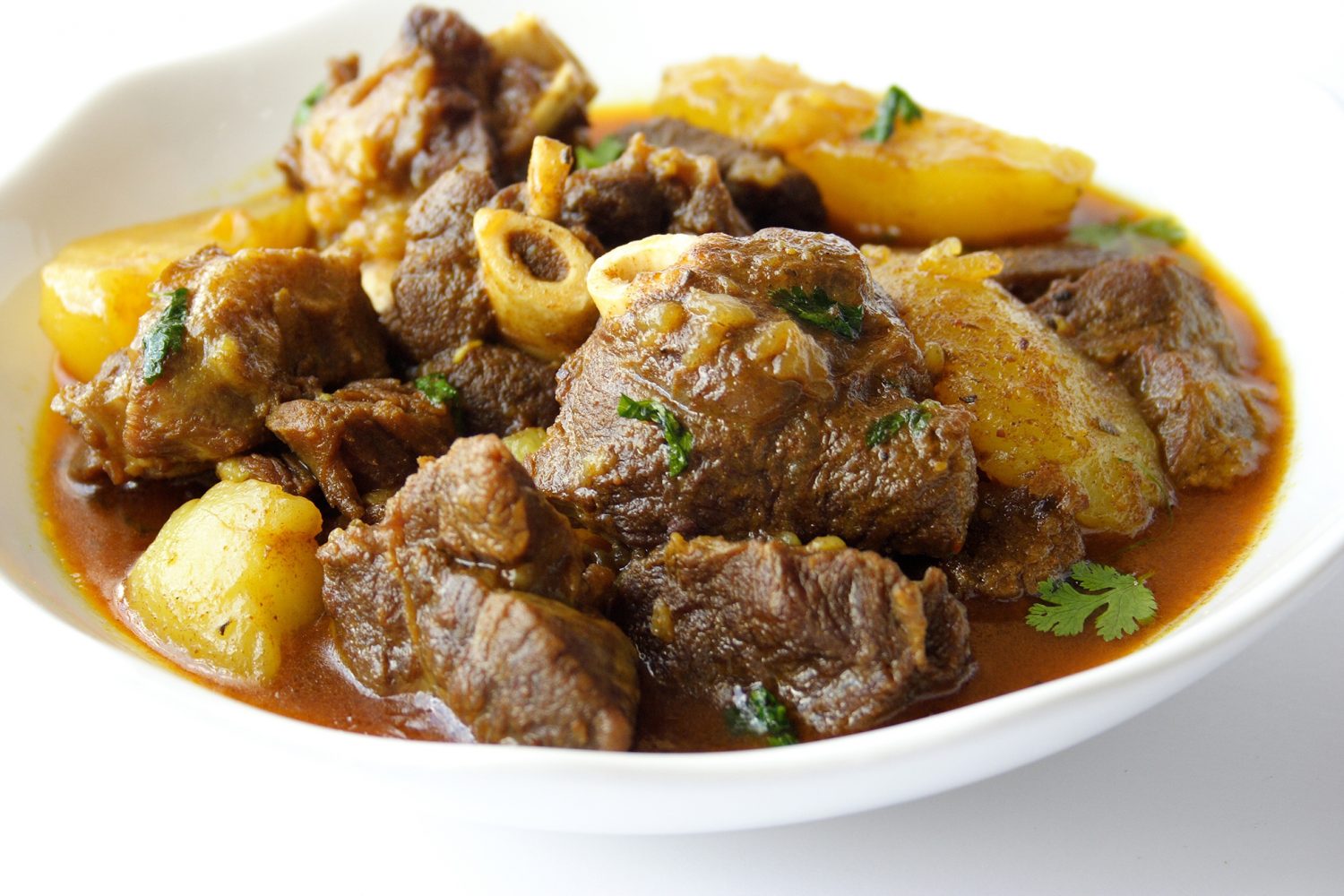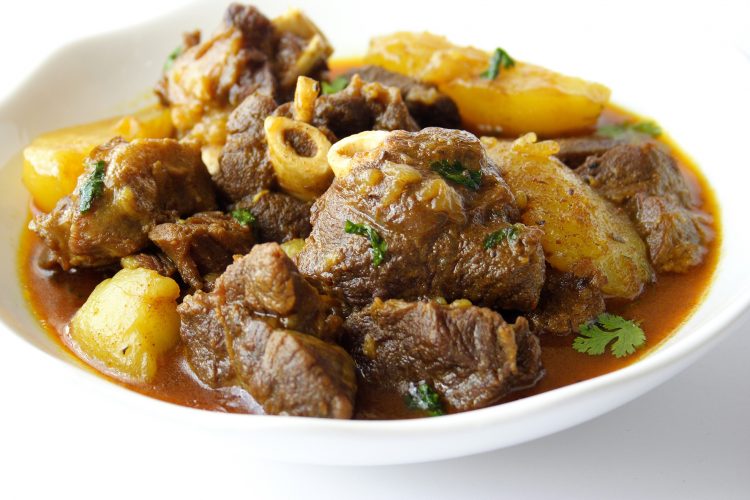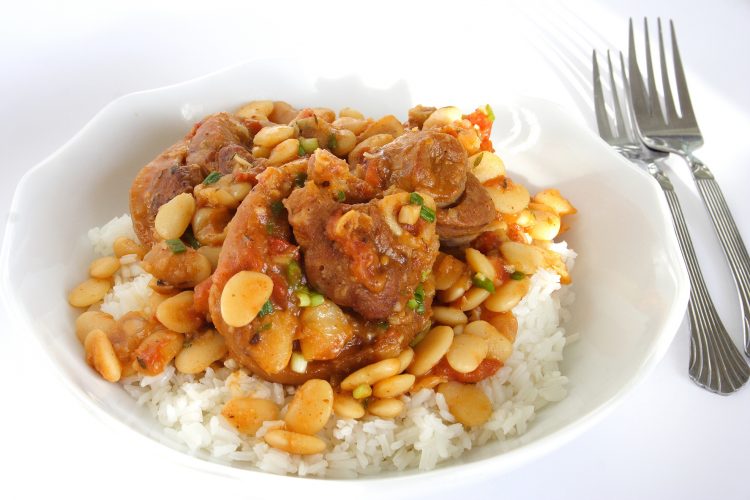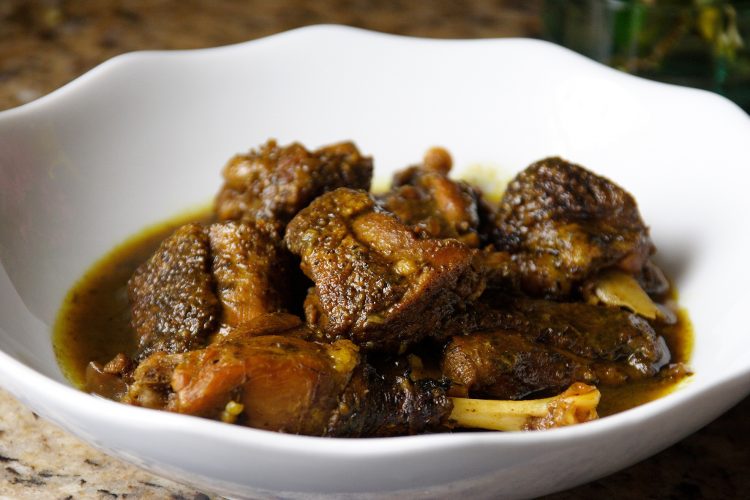Have you ever cooked meat, or poultry, such as duck, in a pressure cooker only to have it turn to shreds? A mass of mush? I have.
A couple of weeks ago some friends and I went shopping for meat to make Porchetta (Italian-style rolled roasted pork belly). As the butcher prepped the meat, his assistant electrically sawed some pork knuckles (ham hocks) into halves. Thoughts of Porchetta faded (if you can imagine that); the fresh pork hocks cooked low and slow – meat easily separated from the bone, skin soft, almost melting seemed more inviting.
As I expressed my thoughts aloud, the butcher turned his head away from me and said to one of my friends in a conspiratorial tone, “Man de pressure cooker destroys the meat”.
I knew what he meant. “No,” I said, “you have to turn the heat to low when the pot comes up to pressure and your meat would not be ruined.” He seemed skeptical and gave me a look with which I have become familiar, one that says: ‘what do you know about cooking?’
As I’ve said, I have on occasion ended up with shredded meat and bones instead of tender morsels of meat. That was a very long time ago though. One day, I simply decided to lower the heat under the pressure cooker after it had come up to pressure to cook some curried beef. The results were remarkable. Of course, if I had taken the time to read one of the many pressure cooker manuals I have, I would have known that lowering the heat is a standard practice when cooking with a pressure cooker. The mistake that many make, is to leave the heat on high and cook the meat longer than necessary resulting in the meat literally busting up, converting into a mass with an unappealing taste and mouth feel. Mush.
Apart from the high heat, and prolonged cooking, another factor that contributes to its disintegration is the actual cut of the meat. For example, there is such a thing as white meat and dark meat. White meat cuts refer to the parts of an animal that are not overworked; these cuts are leaner and do not have a lot of connective tissues, tendons and muscles. Dark meat cuts are the muscular parts of the animals that are worked often and regularly such as the legs, thighs, wings, shoulders, necks. The white meat, the more tender parts, take a shorter time to cook, while the dark meat parts need more time to breakdown and tenderize, resulting in a luxurious taste and the much-sought-after, drop-off-the bone effect. Given the structural difference in the make-up of the meat, if cooking with liquid, the white meat needs less liquid to cook and the dark meat needs more.
It seems strange in the age of the Instant Pot (electric pressure cooker/crockpot) that the traditional pressure cooker gets a bad rap, for, as the butcher puts it, destroying the meat. I say this because unlike the regular pressure cooker where you can stop and check the process, the electrical version can easily take your meat to meat sauce consistency, ideal for Sloppy Joes and dressing pasta, if that is your goal.
So, the next time you want to make a stew, braise, or curry, do not be afraid to make it in a pressure cooker. Remember to take the following into consideration – the cut of the meat, the amount of liquid, and to turn the pressure cooker to low once the pot comes up to pressure. The cooking time will also vary depending on the animal, some meats are tougher than others, for example, cowheel takes longer to cook than pig’s feet (trotters) and chicken feet take even less time to cook. Beef ribs take longer to cook than pork ribs. Duck takes longer to cook than turkey. Mutton takes less time to cook than beef. If you are unsure, ask your butcher.
Cynthia










